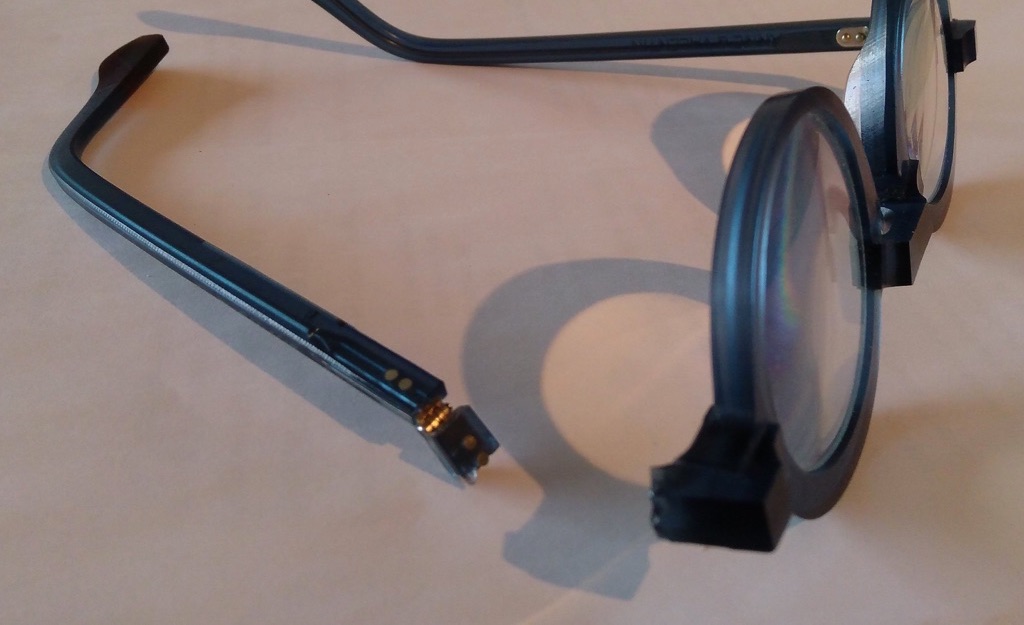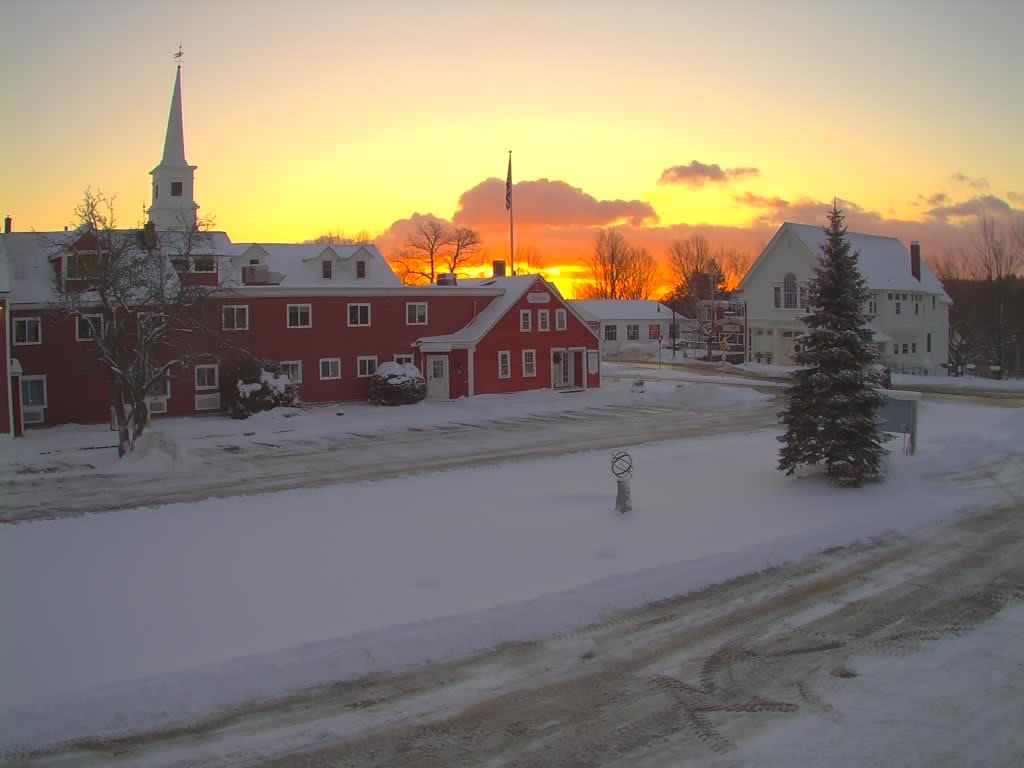We received a lot of snow here in Charlottetown over the weekend, and this triggered the usual efficient snow clearing operation from the City of Charlottetown, a stage of which, once the dust has settled, involves pushing the snow from major streets into the middle of the street into a temporary snow mountain and then clearing it all away in a flurry of snowblower and dump trucks.
The IslandCam, conveniently located a few feet from where I type here in The Guild, captured this operation this morning on the lower end of Queen Street between Richmond Street and the water. Here’s a time lapse showing 30 minutes from mountain to “so clean you could eat off the street”:
Here’s how I grabbed the time lapse, using ffmpeg, a wonderful Swiss Army Knife-like video manipulation tool.
ffmpeg -i rtmp://198.167.125.144/islandcam/islandcam.stream -vf fps=1/10 img%03d.jpg
The rtmp://198.167.125.144/islandcam/islandcam.stream is the URL for the IslandCam streaming video; the fps=1/10 says “save one image every 10 seconds” and the img%03d.jpg says “name these files img001.jpg, image002.jpg, etc.”
The result was a folder filled with images snapped once every 10 seconds.
Next, I converted these into a movie with the convert command from the ImageMagick suite:
convert -delay 6 -quality 95 img*.jpg movie.m4v
And, finally, I used VLC to convert this into webm and format to ensure the video can be viewed in as broad a range of browers as possible, inserting it above with
<video controls="" style="width: 653px; height: auto;">
<source src="https://s3.amazonaws.com/images.ruk.ca/snowclearing.m4v" type="video/mp4" />
<source src="https://s3.amazonaws.com/images.ruk.ca/snowclearing.webm" type="video/webm" />
</video>
There’s lots of potential fun and merriment to be had with creating IslandCam time lapses like this: there’s lots going on on Queen Street!
As part of my HTTPS and move-to-Montreal migrations of this blog and its cousins, The Rukapedia got lost in the shuffle. It was still there, and still serving, but for many (most?) people viewing it, HSTS restrictions in the browser would have thrown up a warning and not allowed you to view it (because it was still being served off a server that wasn’t HTTPS yet).
I set out to solve that issue today, and it turned out to be remarkably easy.
The Rukapedia, since I created it in 2005, was running MediaWiki 1.5, a now-very-old version of the same software that undergirds Wikipedia. I reasoned that it was a good time to update MediaWiki too, and, thanks to detailed instructions and a solid update script, that only took a few minutes.
It was a little fiddlier to get the extension that powers the Timeline page updated too, but eventually I sorted that too.
I can’t claim that The Rukapedia is a current source for all-thing-me, but, if nothing else, it’s an interesting pool of random bits of projects, people and ideas I’ve found along the way over the last decade.
At the December meeting of the Learning Partners Advisory Council, I put forward a proposal for a working group I dubbed “Rapid Response to Barriers to Learning.” At its heart I viewed this as a sort of trouble-ticketing system for practical issues that are barriers to learning: a way of identifying and quickly responding to issues that, whether because they affect smaller numbers of people, cross traditional bureaucratic silos, or aren’t visible from inside systems, had heretofore escaped attention.
I propose to strike a working group of the Learning Partners Advisory Council, the Rapid Response to Barriers to Learning Working Group, that will be specifically tasked with identifying issues such as this – small by the numbers, profound in impact – with an eye to making specific, realistic, actionable practical and policy recommendations that will remove barriers to learning. These issues may be economic, they may involve disability, they may touch on geography, or simply on learning interests that fall outside the margins; what they will share is that they present uncommon barriers to learning that can be reasonably removed or mitigated.
While my proposal was not met with an enormous outpouring of warm enthusiasm, it did serve as a stimulant for some of the most positive and vigorous discussions that the Council has mustered in its four meetings to date, and I’m happy to have played a small role in catalyzing that. I believe that many of the threads started there are still alive inside the Council, and that we’ll return to these themes in our future meetings.
My proposal is now public thanks to the launch of the new Learning Partners Advisory Council website. Mindful that PDFs are where data goes to die, I’ve posted the working group proposal here as well, as and aid to the future and to allow for comment.
For as long as I can remember I’ve been naming my Linux hosts after my grandparents: nettie is a wireless router, dan was its redundant backup router, ross was my main Linux server for the longest time, and, when I migrated to Amazon Web Services, my server there I named ada (I have the benefit of having 5 grandparents, so I still have louise in my pocket for expansion!).
During the migration process from AWS Virginia region to the AWS Canada region, I needed a temporary new hostname for ada, and so I used canada.
It was only today that I realized the canada contains ada within it. So I think I’ll leave it as that.
A few days before Christmas I spent 30 minutes in spirited discussion with Steve McQuaid on the telephone. Steve had just spoken to one of the Island’s Rotary clubs about challenges in the non-profit sector, and he’d used the School Lunch Program initiative of PEI Home and School Federation as an example of an initiative that could use Rotary’s help. In his capacity as President of the Community Foundation of PEI, Steve had taken an active interest in school nutrition, provincially and nationally, and since home and school became engaged with the issue two years ago we had many conversations about the way forward. We concluded our call with a plan to speak again early this new year.
I first met Steve five years ago when, again through his role with the Community Foundation, we chatted about an idea I’d come up with for developing a sort of centralized IT help desk for non-profit organizations. He generously agreed to spend time with me talking about whether it was a good idea or not, and whether, even if it was, it was something achievable. As with the myriad conversations we shared in the years since about all manner of things, Steve was enthusiastic, helpfully critical, imaginative and freely giving of his time and energies.
Steve died earlier this week at the age of 69. With his death I’ve lost a trusted source of advice and counsel, the Island has lost a great and tireless champion of the power of non-profit organizations to change the world, and the McQuaid family has lost a caring and generous man.
Three years ago I migrated this blog from my owned-and-operated server here in Charlottetown to an Amazon Web Service’s Virginia-based “cloud” server, and it’s been served from there until yesterday.
Last month Amazon announced the opening of a Canadian region and I decided it was time to repatriate my hosting. Amazon remains a large multinational corporation, of course, so this is repatriation of bits, not dollars; it’s not like I’m migrating to a artisinal server farmer in rural Quebec.
While AWS is notoriously easy to use, especially when it’s an environment you live and breath inside professionally, I managed to cock up the migration.
The first thing I did was to purchase a reserved instance for the Virginia region the week before the Canadian announcement. I had no way of knowing the Canadian announcement was coming, so this was a simple cost-saving move (Amazon gives you a substantial discount if you pre-pay for a year), rather than a cock-up.
Once the Canadian announcement came, I thought I’d simply be able to sell the reserved US instance on the AWS Marketplace; alas this wasn’t possible because the Marketplace is one of the few aspects of AWS that requires a U.S. bank account.
I contacted AWS support about this quandary and, to my surprise and delight, they offered, as a one-time-only-don’t-get-used-to-this move, to refund my US reservation if I purchased an equivalent Canadian one.
I eagerly took them up on the offer.
And managed to cock that up as well: I misunderstood the AWS UI poorly enough that I managed to purchase a second US reservation by mistake.
AWS support again extended a hand of help, and agreed to refund that mis-reservation too.
So now I’m set. I migrated ruk.ca, consuming.ca, pei.consuming.ca, casamiacafe.ca, my Nextcloud, and the backing infrastructure for the Social Consumption Project yesterday; with a few glitches here and there, it all went without issue. The U.S. instance is still running to allow me to clean up a few stragglers; by the end of the week I should be serving pure 100% Canadian bits, though.
Please alert me to any weirdness you note that might be a result of this migration.
One of my favorite new restaurants in Charlottetown last year was Mad Wok. It’s a quick-service cafeteria serving Asian food that set up in the old Kay’s Building downtown.
I always order the same thing—Cashew Veggie and a jasmine tea—so I cannot speak to to the breadth of the menu. But the Cashew Veggie is very good, especially if ordered “spicy.”
Other things I like:
- If you’re ordering in, they now serve you with real plates and cutlery instead of disposable paper and plastic.
- Their mobile app (Android | iOS) allows me to order my lunch so that by the time I walk down the street from the office it’s hot and ready.
- They’ve paid a lot of attention to both graphic design and interior design: there’s a real attention to detail on both fronts.
- Spotlessly clean; they push chairs back into place, clean tables quickly, and all the cooking is done out in the open.
- Very friendly and accommodating staff.
At a time when many businesses created by new Islanders seem to be created by regulatory requirement and are decidedly disposable, Mad Wok looks like it’s settling in the the long haul.
Welcome.

Regular style-watchers will recall that I acquired a new pair of eyeglasses from Gaudet Optical back in April.
As my personal style gravitates toward schlump, wearing these glasses over the nine months has been something of a revelation to me: for the first time in my life I received compliments from total strangers.
“That’s fetching eyewear you’ve got chap,” and the like. I’ve never felt closer to Philip Johnson as I have this year.
On New Year’s Eve, the eyeglasses tumbled to the ground from my head during fatherly-related anxiety-containment duties at Pearson Airport in Toronto. The glass itself was unaffected, but the left arm became detached at a most inconvenient place:

Fortunately–given that the world is blurry, both near and far, without eyeglasses–I was still able to wear the glasses with one arm. But any activity that involves bending over risks the glasses falling from my head.
I emailed Gaudet Optical this morning to see if they glasses might be repaired and their response came quickly, and with good news:
That does look like a very unfortunate incident indeed. Your frame is under warranty so I will order a new frame front for you today, the company generally says is take about 2-3 weeks to ship into us (coming from Europe).
How wonderful!
So I will be a one-armed eyeglasses wearer for January, and then get by on my old glasses for a few days as the repair is affected over in Halifax.
(Post best read while listening to this).
The Old Farmer’s Almanac webcam captured a stunning sunrise over Dublin, New Hampshire at 6:30 a.m. on January 1, 2017:

Last week we make a lightning-fast dash through southern Ontario to visit Catherine’s family and mine. We had a little bit of time, here and there, to go exploring once we’d set down in the Golden Horseshoe, and I’ve noted a few of the highlights over in the Travels section:
- Tamp Coffee
- Mixed Media
- Burro Tacos
- A Different Drummer Books
- The Cannon
- Hamilton Museum of Steam & Technology
We counted no fewer than three stores focusing exclusively on “Hamilton” products–either products make in Hamilton or products branded with variations on Hamilton. The city appears to be latching onto some Detroit-style “gritty but proud and rising” spirit these days, and the result is a kind of gentrification that doesn’t, at least on first blush, seem soul or neighbourhood destroying.
Never ignore the pleasures of the second city.
 I am
I am